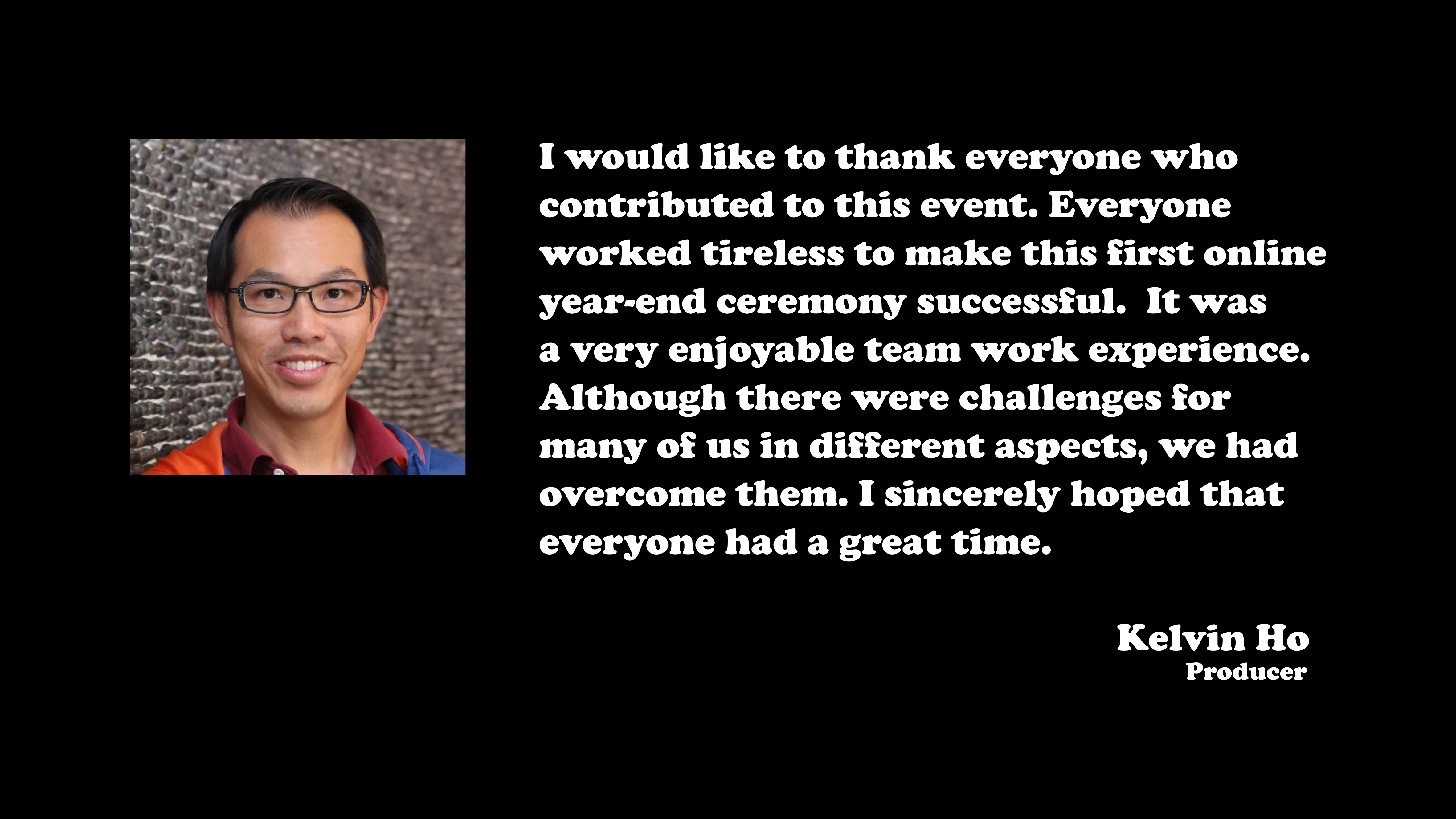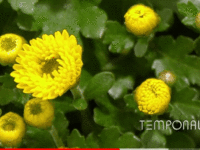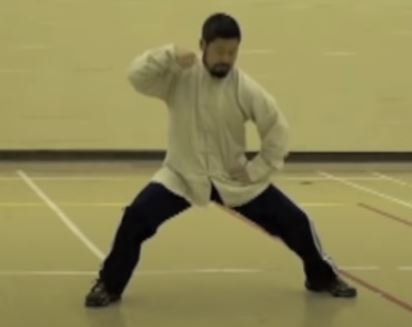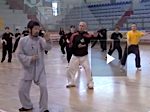You can also see a few pictures here.
News : Blog
You can follow Master Chen’s blogs here.
Conservation of Energy
Master Chen used this term in one of his lectures. Here is my understanding:
In an ideal closed 2 energy system, Conservation of Energy means the total energy is the same while the magnitude of kinetic energy and potential energy can vary.
Mathematically, total energy = kinetic energy + potential energy.
Read more
On October 20th, 2020, during an online class Master Chen Zhonghua shared and demonstrated an important action of the knee that has not been disclosed before. Prior to discussing the important action, I shall discuss some important functional and structural aspects of the knee as a means of providing a context to help the reader conceptualize how this recently disclosed information is applied in practice and applications.
In today’s class, the following students received Foundation corrections while the class had the benefit of watching.
- Sven Gusowski – Fetch Water
- Raymond Dickey – Six Sealing Four Closing
- Tomasz Raganowicz – Six Sealing Four Closing
- Fung Chern Hwei – Positive Circle
Today’s class on Foundations was held on Canadian Thanksgiving.
I named this the Yilu Project because I have taken some steps to “clean up my yilu”, and this is my baseline for measuring progress or the lack thereof. I have been attending weekly online classes with Master Chen Zhonghua. Having access to consistent corrections on my yilu and foundations is a “once in a lifetime opportunity”! Additionally, I have been getting feedback from my Taiji brother Kelvin, who has a very good eye for details. Feel free to point out mistakes.
Respectfully,
John
There were many corrections and a number of important conceptual points on how to learn.
-We have 2 general types of movements
Action movements are what the particular form is about in order to execute a particular application on an opponent. Must be accurate.
Adjustment movements are to position body parts to be in place to execute the action movement. Accuracy in getting there is less important.
We must know the difference. We tend to not know or show the difference.
-Master Chen repeated the instruction, as he has many, many times, to listen and watch as he explains. Do not attempt to copy while he is explaining. We miss much of the instruction while we attempt to copy. I have heard this so many times, yet I was copying while he spoke in the class this morning.
-Not one move in PM Taiji is like any other in life or sports. We must see that the moves are unique to PM Taiji. MC does not move like an average person, but the average person, as in we his students, THINK we move like MC. He has said to me specifically in other zoom classes that I make a good copy of the moves, but he can see that I do not really do the essence of the moves. We tend to compare to other movements and other sports, but PM is different from those moves. I must say that I make many of these comparisons. I would say my whole education has been based on building on comparisons and it is a very difficult thing for me to not compare PM to other human activities. I can see now that recalibration must happen without these comparisons.
The actions need to be precise/ accurate. There is only one way to do it right. The adaptation you can get away with it. Read more
Bevel gears are gears where the rod or the rotating shafts intersect.
The shafts are often mounted 90 degrees apart, but can be designed to work at other angles as well.
They are used for power transmission between intersecting shafts.
This allows a vertical rotation to be converted to a horizontal rotation.
- movement by doing or pretending vs movement as result of physical structure & rotation
- if you think you are executing correctly, you are not
- get into position>lock & rotate
- rotation does not normally create displacement in space
- core must be totally independent from other body parts
- when moving body must be locked
- reorientation is not considered movement
- initially all body part move together
- two body parts can move if they are independent
- ultimately there are 18 body parts
On 7. Oct 2020’s online class, Master Chen talked about the first 2 layers of the positive circle.
The 1. layer is horizontal, with only the hand going back and forth.
The position of the hand should be slightly higher than the shoulder, and much higher than the elbow. ← →
The 2. layer adds a vertical dimension to the circle (to the above action), by moving up and down.
This up-and-down-movement can only come from the shoulder & kua.
The dropping of the front kua takes the front hand elbow with it (downwards), the dropping of the rear kua takes the front arm with it (sideways).
The rear foot pushes into the dantian. The power is from the dantian. ↓↑
Combined, the horizontal ← → and vertical ↓↑ action will display these two layers and the hand will appear to be moving, although it is not.
Today we completed a set of Foundations led by Kelvin Ho. Master Chen provided instructions on Double Negative Circle (symmetric, and alternating) as well as Turning Flowers and Playing with Sleeves from Erlu.

– We have to ignore the details and do the Taiji we want to do. To copy without any technical things. Then add the details.
– When we add the details, we tend to forget the overall thing.
– This is the same as forgetting where we are in the form when instructing. We need to be more fluent with the whole thing.
“The movements of the body are in the Dantian and nothing leaves the dantian. Only power gets out of the Dantian.”
The quote above from Master Chen Zhonghua and his assigning me to write on the dantian sent me on a journey of understanding…and to be forthright, I got stuck. I over thought things and I had difficulties “getting the ball rolling” or rather the dantian article. So being an educated person, I did what students do, and gathered up my information from the online lecture and from past videos from Master Chen Zhonghua.
The Central Vertical Line
The central vertical line (CVL) is an internal stretch that exists between the bau hui to the hui yin. I have heard Master Chen refer to this as a “rod” in the body. It should be present whether we’re doing foundations, form or push hands.
When I’m starting with students that need to strengthen the CVL, I have them do a guided imagery drill. The guided imagery was taught to me by Richard Johnson when I attended a week long workshop with Master Chen in 2011. I adopted the guided imagery and added a partner component as a means of enhancing the physical understanding and strengthening the central vertical line.
Today Master Chen covered the Double Positive Circle and 29. Upper Cloud Hands in Yilu.
Double Positive Circle Read more
In learning Taiji, Master Chen would often say that we create power with size and restriction. He would also say that we must develop the ability to separate every single part of our body. This includes left and right, top and bottom, front and back, and inside and outside. Read more
I entered into class late and saw everyone doing double positive circles. He instructed us to do it in a higher stance with our elbows attached to our waist. Read more
Today Master Chen covered the Double Positive Circle.
This was a busy week:
- Wednesday
- Private session with Master Chen
- Advanced foundations and Yilu class with Master Allan
- Thursday
- Jian foundations and form class with Master Allan
- Friday
- Private session with Master Allan
- Basic foundations and Yilu class with Master Allan
Key notes in no particular order:
- Your body may be tired and sore from the previous day(s), and you will ask yourself if a day of rest would be better than going to train. Go to class! Once you start moving, blood will flow, and that soreness will go away. Every class has multiple gems, but they’re only available in the moment and in the context of what is being taught. If you miss it, you miss it, which I find to be more painful than the discomfort of tired muscles.
- Move with power: This is a martial art, not a dance. Every move must come from a place of power. Visualise your opponent and make sure you are affecting their body with each movement.
- Our arms are not part of the movement; they are only along for the ride. EVERYTHING comes from the kua and rotation.
- When Master Chen demonstrates a specific point, only look at that point. He could be sacrificing his form elsewhere in the body to emphasise something very specific. If you’re watching other things, you could be learning something wrong.
- When Master Chen is demonstrating a movement, he is not teaching anything theoretical. He is showing you EXACTLY what he is expecting you to do. Do not try to analyse it. Mirror it to the best of your ability.
- Training should not be comfortable. Always grind your joints that little bit further than they want to go, so they will continue to open up.
- We all make the same mistakes! This was evident after Wednesday with Master Chen present for Master Allan’s class. Everyone felt personally targeted by the new elbow exercise video the following day: http://practicalmethod.com/2020/09/elbow-exercise-20200917/
- It isn’t easy in the time of covid, but if possible train with a partner. The difference in someone physically stopping your shoulder from moving back, or locking your knee so it doesn’t follow, makes a big difference! (Please be safe! I’m lucky to get to train with family)
- Practice your form without moving.
- As always: Don’t move, only rotate!
I know I am missing so much, but it was a week of brain overload. I’m very happy with the progress I felt in my body. I was a little concerned on Wednesday as I felt a pop in my right kua. Thankfully it was a good pop. My right side has opened up a lot!
I’m looking forward to seeing the video from Wednesday’s private session. We worked through section 3, which I’m just trying to get my head wrapped around the choreography. If you’re looking for some great detail on that section, I’m sure between my session and Anton’s you’ll get great material. If you’re looking for a great taiji comedy, I’m fairly certain I played the part of the uncoordinated court jester to a T 😀
While observing my training, Master Chen explained that I had slack in my foundation exercise. He went on to clarify that when I was in a posture and started the transition to another posture the tension/stretch was lost. This stretch must be maintained even if one is letting a joint adjust. Master Chen used the example of the elbow, the section below the elbow must be like a stick, and the section above the elbow must also not be slack. To elaborate, Master Chen said to think of a car. Even though the gears rotate, the physical structure of the car is solid. He said that this concept of removing the slack must be used on all parts of the body so that in push hands you will not collapse under the push of your opponent.
Next, Master Chen spoke on posture. He was pointing out the delicate balance of where the knee placement was relative to foot on the front leg. During this demonstration I made a learning error which I will share for the benefit of readers:
Master Chen was showing me specifically the placement of the front leg, pointing to the front leg to make that clear. After I was convinced that I had an image of how his leg was positioned, I moved around to get another perspective of the overall posture, this is a mistake. Master Chen pointed out that he was specifically making sure that the front leg was correct so that we could learn from the placement. He went on to say that he may even sacrifice some other aspects of his posture to make sure the single point is demonstrated as accurately as possible, so if we as observers look elsewhere we may be copying an incorrect body position.
Specific to the posture, Master Chen demonstrated when the knee was too far back how there was an inability to get full power out of the front lower leg muscles (Tibialis anterior, and Extensor digitorum longus from what I felt). When the knee was bent too far forward, Master Chen demonstrated the inability to get a bite (also resulting on the muscles not engaging). Once the position was correct, he demonstrated that a bite could be obtained, and this could be felt through the Master Chen’s leg muscles.
Today, Master Chen covered Foundations and provided corrections on Twisting the Towel.
Wed Sept 9, Edmonton, Alberta; approx 8 PM local time
Impromptu training with GM…how to move…
Master Chen demonstrated the Positive Circle today.
Six Sealing Four Closing Notes – Master Chen Zhonghua Online Zoom Lesson – 27 Aug 2020 – Brian Chung i
Master and Kelvin Ho provided instructions and corrections on Six Sealing Four Closing today.
Six Sealing Four Closing – Kelvin Ho
– Hand does not move. Dantian initiates the action. Kua lines up with elbow. Rotate the dantian to push the kua out.
– To connect the rear leg through the kua to the front arm. We don’t want the upper body there.
– Create a line from the front arm to the rear foot.
倒手 Dao Shou
Master and Kelvin Ho explained, demonstrated and gave examples of Dao Shou.
Read more
Double Negative Circle Notes – Master Chen Zhonghua Online Zoom Lesson – 21 Aug 2020 – Brian Chung i
Master and Kelvin Ho provided instructions and corrections on the double negative circle. (1) Fist draping over body (2) Double push down.
Master gave a physical example: hold a stick to cross a door that is 3 feet wide and 6 feet tall.
Read more
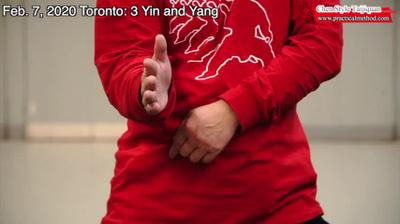
Master Chen Zhonghua’s Toronto Workshop March 2020-3
Presenter: Chen Zhonghua Length: 9 min. In: English Year: 2020 Difficulty:2/5 At: Toronto, Canada
Movement is yin, and structure is yang. Master Chen demonstrated what that meant in this video. There were also other discussions on yin-yang theory, which requires constant practice and understanding.

